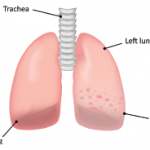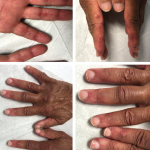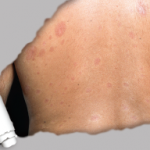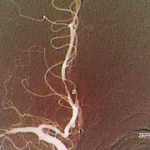In the late-breaking abstract session at ACR Convergence 2020, drug research for a variety of indications is reviewed.


In the late-breaking abstract session at ACR Convergence 2020, drug research for a variety of indications is reviewed.

Rajandeep Paik, MD, FACR |
Interstitial lung disease (ILD) is a heterogeneous group of lung parenchymal disorders that share several clinical, radiologic and histopathologic features, and are therefore grouped together.1 ILD can occur in association with most rheumatic connective tissue diseases (CTDs), but patients with systemic sclerosis, polymyositis, dermatomyositis and rheumatoid arthritis have the highest risk of developing ILD.2 A…

Patient with autoimmune disease may experience medical emergencies. Here is an overview of recognition and management of three emergent situations for patients with scleroderma: critical digital ischemia, scleroderma renal crisis and intestinal pseudo-obstruction…

Vania Lin, MD, MPH, & Leah Krull, MD |
Clinically amyotrophic dermatomyositis (CADM), a subset of dermatomyositis (DM), is a rare autoimmune disease characterized by typical DM cutaneous findings (e.g., heliotrope rash, Gottron papules, Gottron sign) without evidence of myositis.1 The incidence of DM and CADM is approximately 9.63 per 1 million people and 2.08 per 1 million people, respectively.2 The association with development…

ATLANTA—At the ACR/ARP 2019 Annual Meeting, several widely renowned experts across an array of specialty subjects provided a comprehensive and compelling review of advances in the understanding, diagnosis and treatment of a number of rheumatologic conditions. Sjögren’s Syndrome Frederick Vivino, MD, FACR, chief of rheumatology at Penn Presbyterian Medical Center and professor of clinical medicine…

Type I interferon appears to play a role in disease susceptibility and pathogenesis in several classic connective tissue diseases, at least in some patients. Below, I present evidence supporting this connection, explore potential missing links in pathogenesis and discuss biological treatments that target the pathway. The Type I Interferon Pathway Interferons are a class of…

What happens when systemic sclerosis (SSc) overlaps with other systemic autoimmune rheumatic diseases? Patients with either diffuse cutaneous or limited cutaneous SSc sometimes develop systemic lupus erythematosus (SLE) as well. A new, large cohort study published in the Journal of Rheumatology reveals details on the epidemiology, clinical signs and survival data of SSc-SLE overlap syndrome.1…

Julia K. Munchel, MD, & William E. Monaco, MD |
Eosinophilic fasciitis generally presents with the acute onset of edema followed by progressive skin induration in the setting of hypergammaglobulinemia, an elevated erythrocyte sedimentation rate (ESR) and peripheral eosinophilia in 63–93% of patients.1,2 Skin involvement is typically limited to 20.1% of total body surface area and most commonly involves the extremities symmetrically.1,3 The condition was…

CHICAGO—At Hot Topics in Myositis, a session at the 2018 ACR/ARHP Annual Meeting, three experts discussed new classification criteria for idiopathic inflammatory myopathies (IIM) and offered practical primers on overlap myositis conditions and inclusion body myositis (IBM). New Myositis Classification Criteria After a 10-year development process, the new EULAR/ACR Classification Criteria for Adult and Juvenile…

Gbemisola Olayemi, MD, Evangeline Scopelitis, MD, & Jerald M. Zakem, MD |
Vasculitis is a group of chronic inflammatory diseases in which the blood vessel is the target of an immune reaction. They can be secondary to connective tissue disease, idiopathic or due to infection, neoplasm or drugs.1 Primary angiitis of the central nervous system (PACNS) is a rare syndrome characterized by inflammatory cell infiltration and necrosis…